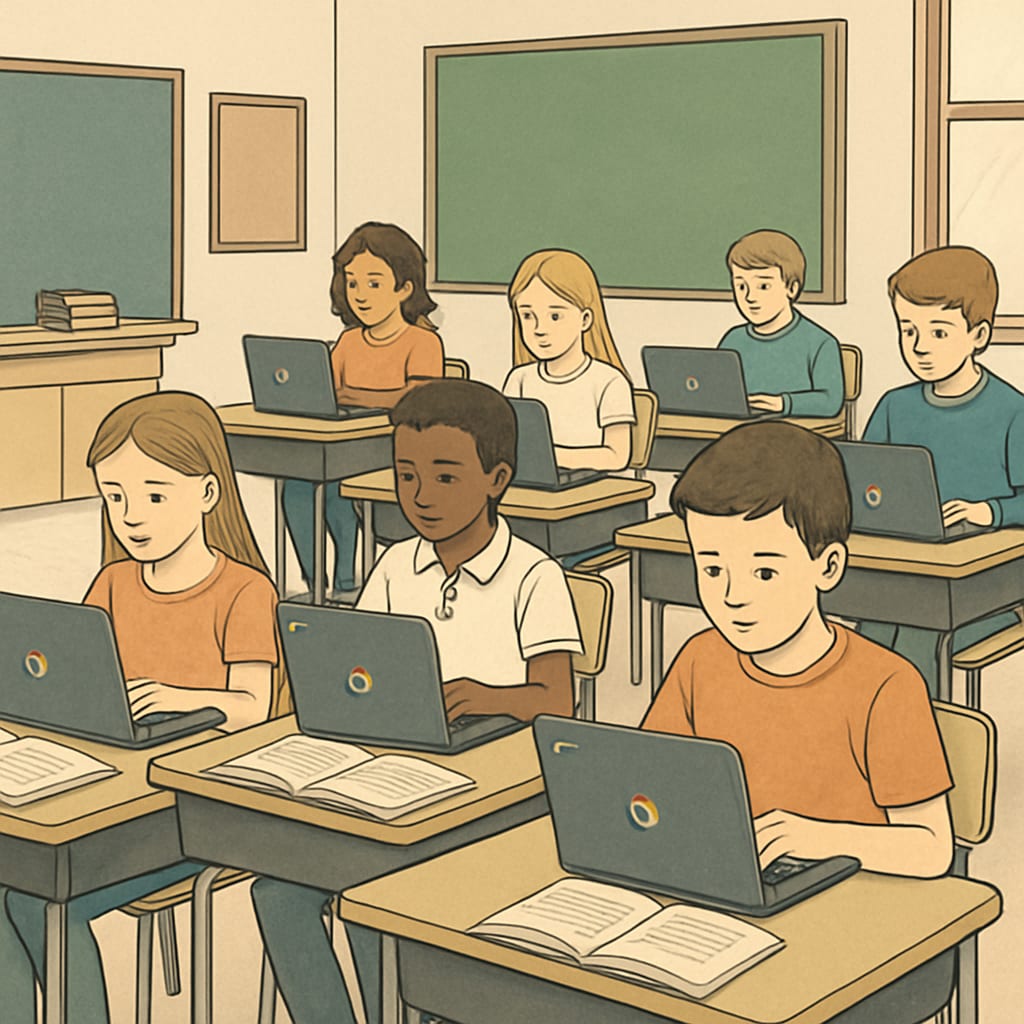The increasing reliance on educational technology, particularly devices like Chromebooks, has transformed K-12 classrooms worldwide. By streamlining lesson delivery, automating assessments, and facilitating personalized learning, EdTech tools promise efficiency and broadened access to knowledge. However, this raises an essential question: is the push for technological efficiency in education inadvertently stifling students’ ability to develop critical thinking skills? This article explores the intricate relationship between educational technology and cognitive development, emphasizing the need for balance in the digital classroom.
The Efficiency of EdTech: A Boon or a Limitation?
Educational technology has undoubtedly revolutionized the classroom. Tools like Chromebooks and learning management systems allow educators to manage large groups effectively, provide instant feedback, and tailor instruction to individual needs. For example, a teacher can use automated quizzes to evaluate understanding and quickly adjust lesson plans based on analytics.
However, this focus on efficiency may come with unintended consequences. By prioritizing rapid task completion and standardized testing, students risk becoming passive recipients of information rather than active participants in the learning process. This can limit opportunities for deeper cognitive engagement and hinder the cultivation of critical thinking skills—an essential competency for navigating complex, real-world problems.

Critical Thinking: The Foundation of Lifelong Learning
Critical thinking—the ability to analyze, evaluate, and synthesize information—is a cornerstone of education. It equips students with the skills to approach problems creatively, make informed decisions, and question assumptions. Unlike tasks that can be automated or streamlined, fostering critical thinking involves open-ended discussions, debates, and activities that require prolonged reflection.
In a technology-driven classroom, the risk lies in over-reliance on pre-designed, algorithmic pathways. While adaptive learning platforms can diagnose a student’s weaknesses, they often lack the capacity to encourage divergent thinking or the exploration of complex, multi-faceted issues. For instance, an online module might reward a student for selecting the correct answer but fail to probe the reasoning behind their choice.

Finding the Right Balance Between Technology and Cognitive Growth
To harness the benefits of EdTech without compromising critical thinking, educators and policymakers must take deliberate steps. Here are some strategies to consider:
- Integrate Inquiry-Based Learning: Encourage students to ask questions and explore topics deeply. Activities like project-based learning, where students solve real-world problems, can complement technology-driven lessons.
- Facilitate Collaborative Activities: Group discussions, peer reviews, and debates create opportunities for students to practice reasoning and communication, skills that go beyond what technology can measure.
- Limit Over-Standardization: Avoid over-reliance on multiple-choice quizzes and automated assessments. Instead, include assignments that require essays, presentations, or creative projects.
- Train Educators: Provide teachers with professional development to effectively blend technology with critical thinking pedagogy.
By adopting these approaches, educators can create a classroom environment where technology enhances learning without overshadowing the development of essential cognitive skills.
The Role of Educators in Shaping a Balanced Future
Ultimately, the success of digital classrooms depends on the intentionality of their design. Educators play a pivotal role in ensuring that EdTech tools serve as aids rather than substitutes for active learning. By prioritizing activities that challenge students to think critically, teachers can bridge the gap between technological efficiency and cognitive depth.
For example, while Chromebooks can facilitate research, teachers might assign tasks requiring students to analyze conflicting sources or debate the ethical implications of a scientific breakthrough. Such assignments push learners beyond rote memorization, encouraging them to engage with content on a deeper level.
As we continue to integrate technology into education, it is crucial to remember that the ultimate goal is not just to impart knowledge but to empower students with the intellectual tools to question, innovate, and adapt. Striking the right balance between educational technology and critical thinking will ensure that students are prepared for the challenges of tomorrow.
Readability guidance: This article uses short paragraphs and lists to enhance readability. It avoids excessive passive voice and ensures a conversational yet professional tone. Key ideas are supported by examples and balanced perspectives, encouraging educators to reflect on their use of technology.


